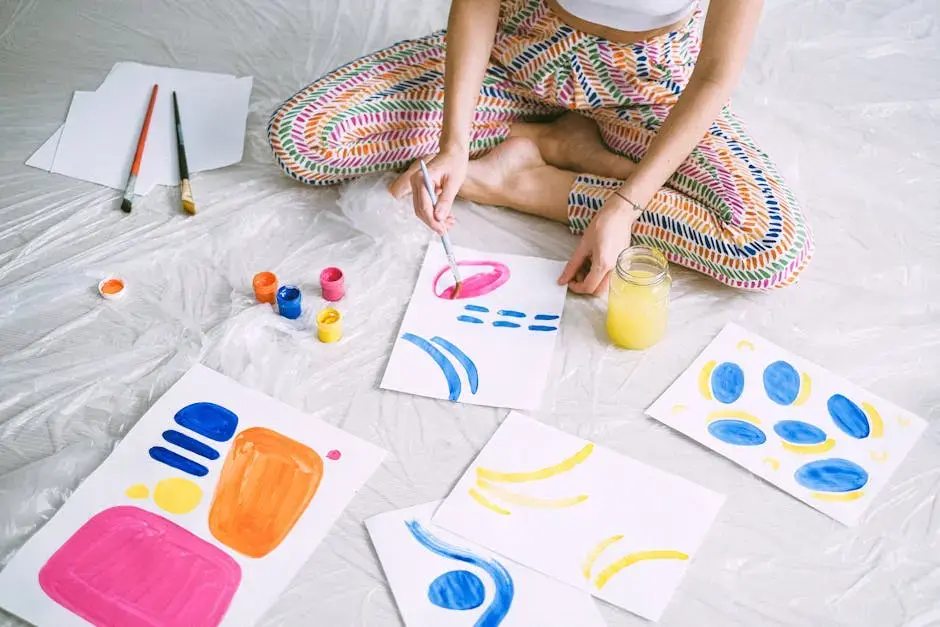Navigating Life Transitions with the Help of an Art Therapist
- Karrie Stafford

- Dec 27, 2024
- 4 min read
Life is full of transitions, and navigating through these changes can often feel overwhelming. Whether it’s a job change, a relationship shift, or simply growing older, these moments can stir up a whirlwind of emotions. This is where an art therapist comes in. By integrating creativity into the healing process, art therapists help individuals express their feelings and work through the complexities of life transitions. In this blog, we will explore how art therapy can be an invaluable resource during these times of change.

Understanding Art Therapy
Art therapy is a unique form of psychotherapy that utilizes art-making as a means of communication and exploration. It allows individuals to express feelings that may be difficult to articulate through words alone. By engaging in creative activities, such as drawing, painting, or sculpting, clients can uncover insights about their emotions and life circumstances.
This therapeutic approach is grounded in the belief that the creative process poses a pathway for personal growth. In sessions, clients often find themselves immersed in the act of creation, which opens a door to deeper self-reflection. The art produced can serve as a tangible representation of feelings that might otherwise remain buried, making it easier to confront and understand them.
Art therapy isn't just about creating something beautiful; it's about the journey of self-discovery it inspires. Even those who feel they lack artistic talent can benefit greatly. The focus is not on the end product but rather on the emotional journey that occurs while creating. Thus, art therapy can be an empowering vehicle for clients as they explore their identities during tumultuous times.
Identifying Life Transitions
Life transitions can take many forms, including career changes, relationship endings, or significant life milestones. Understanding the nature of these transitions is crucial to addressing the emotions that come with them. An art therapist helps clients identify these changes and the feelings associated with them, allowing for a constructive path forward.
Recognizing and labeling a life transition can sometimes be the first step to processing it. Clients often experience various emotions during a transition, and it can be confusing. Here, an art therapist can facilitate discussions that allow clients to explore their feelings in a comforting space. Through creative mediums, these feelings can be brought to the surface, providing clarity and direction.
In a world that values constant movement and change, acknowledging personal transitions is vital for emotional well-being. The structure provided by an art therapy session acts as a roadmap, allowing individuals to navigate their unique journeys with more confidence.
The Benefits of Art Therapy During Transitions
Art therapy offers numerous benefits during life transitions. It provides a safe space to express complex emotions, fosters creativity, and enhances coping strategies. Clients often report a greater sense of self-awareness and empowerment as they creatively navigate their feelings and circumstances.
Through the lens of creativity, trauma and emotional struggles can be unpacked piece by piece. For many, the colors on a canvas can articulate feelings that words fail to express. This expressive freedom can promote catharsis, allowing clients to let go of pent-up emotions and foster healing.
Additionally, engaging with art helps in developing resilience. As clients observe their growth over time, they often cultivate a profound sense of accomplishment. These small victories reinforce their ability to cope with future transitions, instilling hope where once there may have been despair.
Real-Life Experiences: Stories of Transformation
Hearing real-life experiences from individuals who have undergone art therapy can be incredibly inspiring. These stories often highlight the healing power of creativity and how it has facilitated meaningful change during challenging times. By sharing successful outcomes, we illustrate the profound impact an art therapist can have.
For instance, one client struggled to cope with the loss of a loved one. By channeling grief into a series of paintings, she was able to visualize her sorrow and ultimately celebrate her memories. Such transformations reaffirm the idea that art therapy is a valid and valuable form of emotional support.
Another inspiring story comes from someone transitioning out of a long-term job. Through collage-making, this individual was able to navigate the emotions tied to their departure while envisioning their future. These stories exemplify how varied and profound the impact of an art therapist can be in guiding clients through life's changes.
Finding the Right Art Therapist for Your Journey
Choosing the right art therapist can be a vital step in your healing journey. It’s important to consider qualifications, therapeutic approaches, and personal compatibility. We’ll discuss how to find a qualified art therapist who resonates with your needs and values.
When searching for an art therapist, don't hesitate to ask potential candidates about their training and experience. Look for professionals who have a background in both art and psychotherapy. A well-rounded therapist can provide a comprehensive approach tailored to your specific situation. This foundation can make all the difference in your journey.
Moreover, trust your instincts. The therapeutic relationship is crucial, so it’s important to find someone with whom you feel comfortable and understood. Schedule an initial consultation to assess how well you connect. Remember, the right fit can lead to more profound insights during your artistic explorations.
Embracing Change Through Creativity
Embracing life transitions can be challenging, but with the support of an art therapist, individuals can find clarity, healing, and self-expression. The creative process not only facilitates emotional release but also encourages personal growth and resilience. Whether you're contemplating seeking help or already on your journey, remember that art therapy offers a space to explore your feelings and navigate the twists and turns of life with compassion and understanding.




Comments